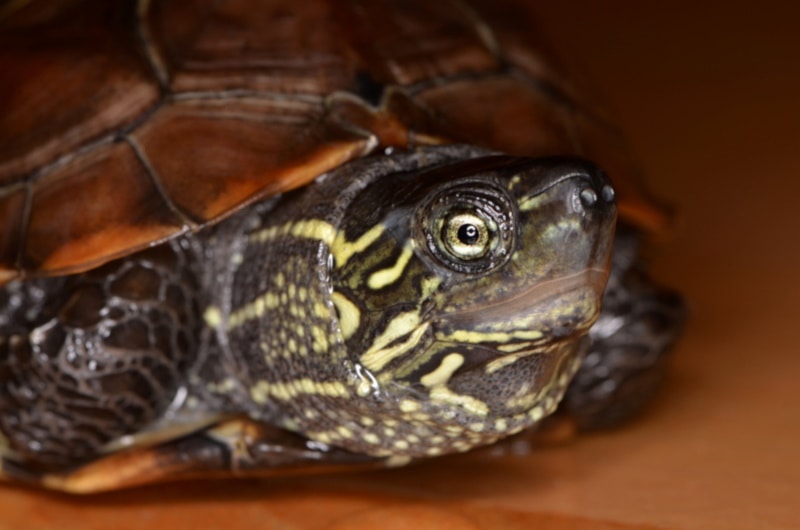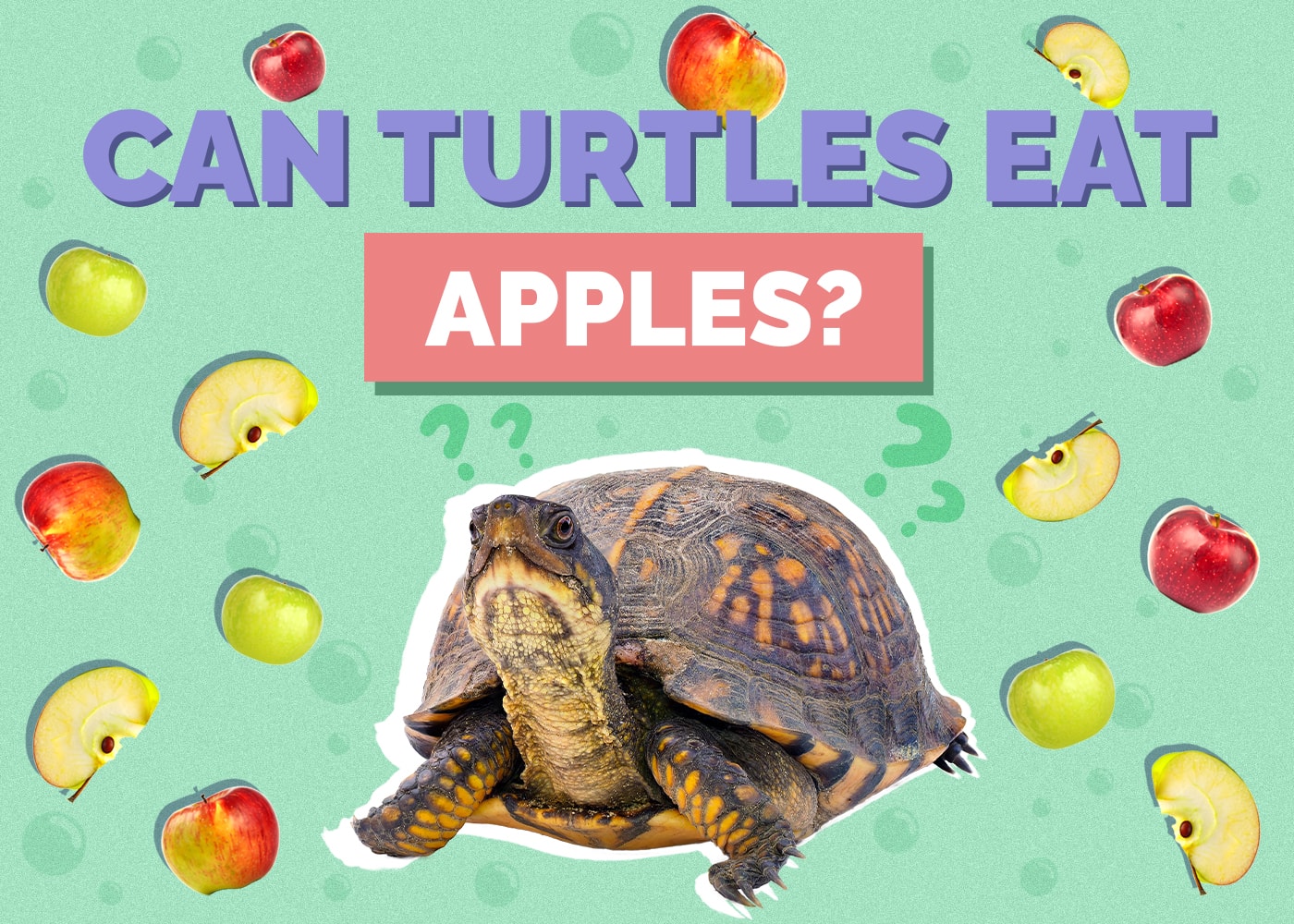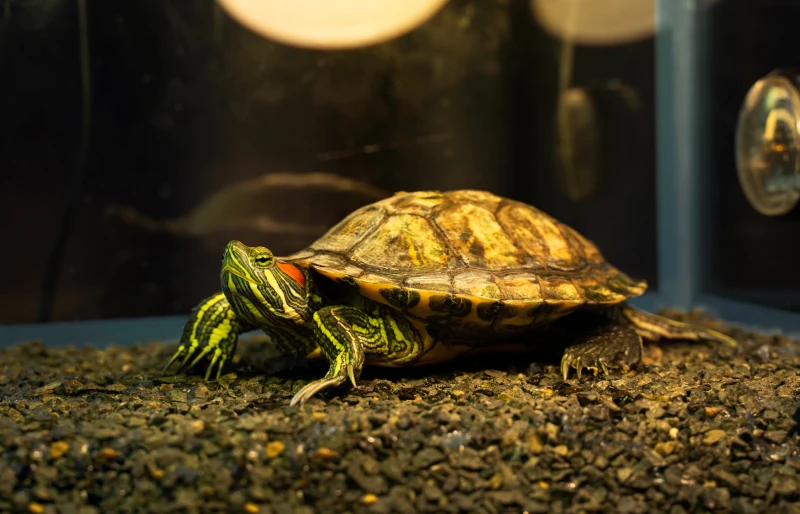Yellow-Bellied Slider Turtle: Pictures, Facts, Diet & Care Guide

Updated on
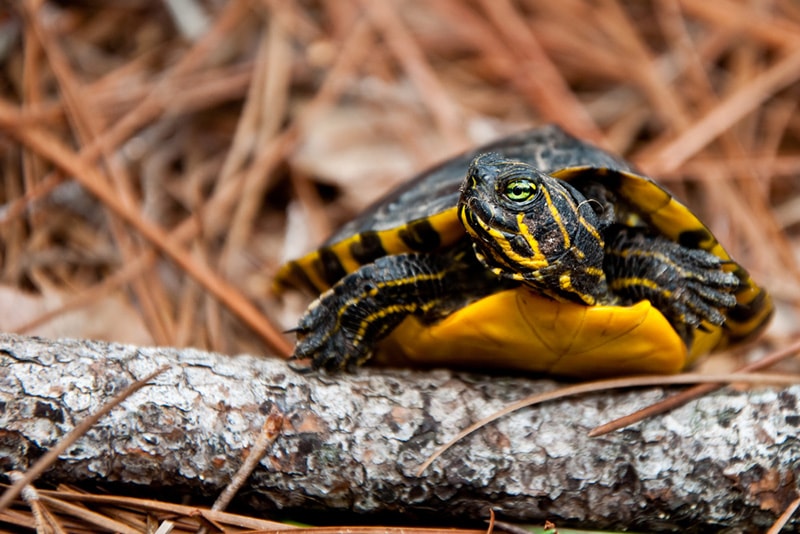
Click to Skip Ahead
Turtles are amazing, placid pets. They offer a serene and calming addition to your home, but they can also provide companionship in their own unique way. The Yellow-Bellied Slider is a common turtle found in the wild and in home aquariums, and they make entertaining pets. Whether you are a first-time reptile owner or looking to add a Yellow-Bellied Slider turtle to your reptile family, this article covers everything you need to know before bringing one home.
| Size: | Large |
| Weight: | 1.5 – 7 pounds |
| Lifespan: | 30 – 40 years |
| Suitable for: | Inside the aquarium, outdoor ponds, intermediate reptile owners |
| Temperament: | Gentle, friendly, active, don’t enjoy being handled |
The Yellow-Bellied Slider turtle is easily recognized by its shell and underbelly, which is the inspiration behind its name. Their shells are black or brown with yellow stripes, and their underbelly is yellow with black spots. They can often be found basking alongside ponds and lakes and are very common in the Eastern United States. They really became popular around the 1950s and are still very popular pets today thanks to their high activity levels and their unique lifestyle that makes them entertaining to watch and care for.
Yellow-Bellied Slider Turtle Characteristics
How Much Do These Turtles Cost?
This turtle’s natural habitat range is from Florida to Virginia in the southeastern United States. They can be found in North Carolina, South Carolina, Georgia, and parts of Virginia and Florida. They are one of the most prevalent turtle species in South Carolina.
The best place to get a Yellow-Bellied Slider is from a reputable breeder with records of the animal’s health and history. The ideal choice is a captive-bred Slider as opposed to a wild-caught one. Young Yellow-Bellied Sliders can often be found for sale online and at reptile exhibits. Their price can range from $10 to $100 depending on the breeder and the turtle’s age. Due to an adult’s long lifespan, it can be simple to find them for sale. A hatchling can cost $10 to $20 on average, while adults can range from $60 to $100 or even more.
When looking for a Yellow-Bellied Slider Turtle, ensure it is healthy. They should be alert and attempt to flee if handled. Their eyes should not be sealed shut, puffy, or have a discharge. Check for shell rot which can be identified by rough or soft spots on the shell.
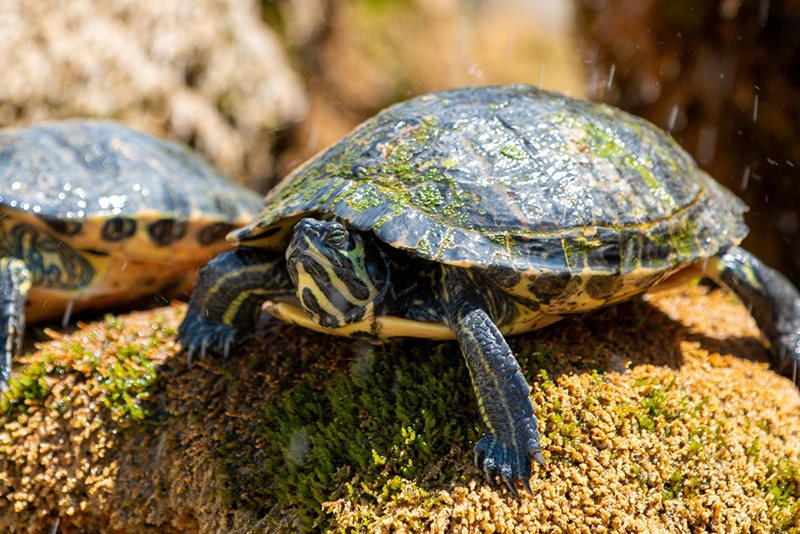
Yellow-Bellied Slider Turtle Behavior
As a diurnal turtle, the Slider is most active during the day. They often eat first thing in the morning and spend most of the day swimming and basking in the sun. They are typically more active on sunny winter days and don’t bask too much in summer but more in the spring and fall.
The fastest way for Sliders to flee when frightened is to “slide” into the water, which is what earned them the name “slider,” but despite being better suited to swimming, they are surprisingly swift on land and can sprint for short distances.
Yellow-Bellied Sliders don’t enjoy being handled, like most turtles, and it can put them under unnecessary stress. They can become acclimated to handling with time, but they will bite if they feel threatened.
If properly cared for, these friendly, inquisitive reptiles make amusing companions. Although Yellow-Bellied Sliders won’t ever be affectionate pets like a dog or cat, they often possess distinct personalities that make them popular with their owners.
Do These Turtles Make Good Pets?
Yellow-Bellied Sliders are cute, interesting, lovable reptiles that are ideal for intermediate reptile owners! They are known to dive, swim, bask, and dig and are quite active during the day. Sliders make wonderful pets for reptile owners who are not afraid to make a long-term commitment.

Yellow-Bellied Slider Turtle Tank Mates
The Yellow-Bellied Slider is friendly and can easily live with various fish, such as Guppies, Koi, Tetras, Catfish, and Plecos, which are great for algae. They can also live with other species of turtles as long as the space is big enough.
Care Sheet & Habitat Setup
Light Requirements
Turtles require UVA and UVB rays, which they will absorb from direct sunshine or a specially designed bulb. They need this light for about 12 hours a day all year round. The sun’s rays will be enough if your Yellow-Bellied Slider lives outside; it won’t need additional UV lamps. The bulbs will need to be replaced every 6 months.
Tank Size
Aquariums are ideal for raising young Slider turtles, but housing them becomes a little more difficult as they get bigger. When you first get a hatchling, you need a 30-gallon tank, but for an adult Slider, a tank should have 75 to 100 gallons. Some owners house their Sliders in an ordinary glass fish tank, while others use plastic pond liners to create a more natural environment.
Water Temperature
Sliders require a consistent water temperature of 75–80° F. The water needs to be warmed by a water heater to maintain the correct temperature.
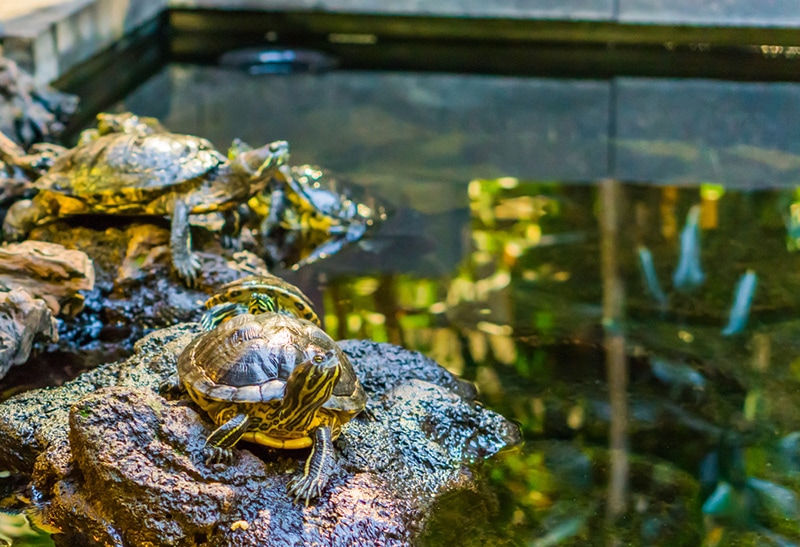
Plants
Yellow-Bellied Sliders appreciate having lots of places to hide. Live plants, leaf litter, plastic boxes, flowerpots, and wood logs provide lovely décor for the dry section of the tank. Live plants can be used in the water, such as moss, waterweed, and Anubis, but bear in mind that your fish may eat them.
Substrate
Yellow-Bellied Sliders primarily require water in their tank. Pebbles or gravel can be mistakenly consumed by turtles, which can result in gastric impact, and the optimal substrate for Sliders is either no substrate or fine sand. Your turtle’s tank will also require land for basking, so adding a plastic or wooden perch or platform that is big enough for your turtle to sit on to the side of the tank is essential.
Filtration
Like most turtles, Yellow-Bellied Slider turtles leave waste in their water, and the water will need to be filtered. If the water stays dirty, it can lead to various health issues for your turtle. Your tank will require a filter rated for 2–3 times the amount of water it contains. Submersible biological filters or canister filters can be used. If your turtle’s tank doesn’t have a filter, it will need constant water quality testing and partial water changes every week, which can be challenging and time-consuming.
Additionally, you should use a water conditioner to treat the water before using it. The chlorine and other harsh water additives that can affect your biological filter and the well-being of your pet will be removed by the water conditioner.
Things to Know When Owning a Yellow-Bellied Slider Turtle
Food & Diet Requirements
Yellow-Bellied Slider turtles are omnivorous and are generally opportunistic feeders who eat whatever they can, whenever possible. Regardless of your turtle’s age, it should receive a variety of plant and animal foods. Young turtles should have a mostly carnivorous diet and should eat twice a day, and once they get older, between ages 2–5, the diet should shift to mostly plant-based.
They should regularly be fed dark, leafy greens such as parsley, romaine, and dandelion greens. They can eat the occasional non-fatty fish or insects but no meat that is high in protein. Commercial turtle pellets are an appropriate basic diet when combined with several vegetables. Offer as much food as your turtle can finish in about 15 minutes, then remove any leftovers.
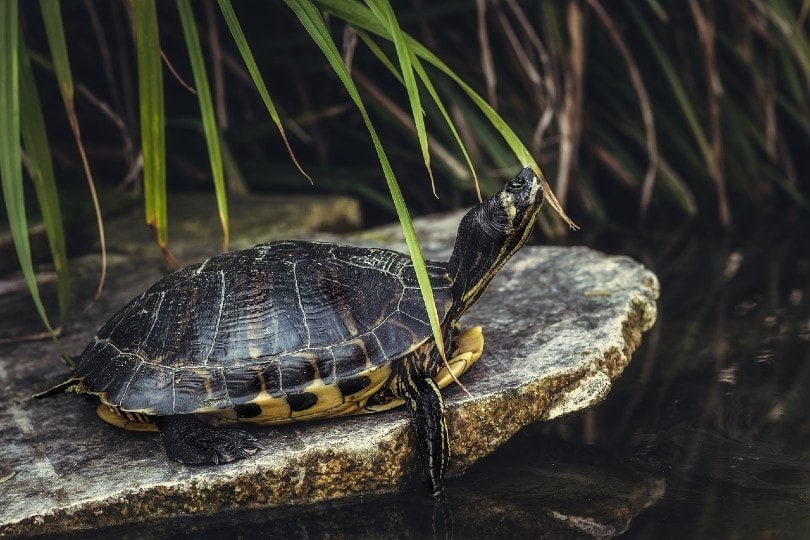
Size & Growth Chart
Yellow-Bellied Sliders are considered large turtles with a shell length that averages 5–9 inches. They are very small when they hatch, and many prospective owners don’t expect them to grow so big! The males are typically significantly smaller than the females. They grow very slowly, only reaching maturity around 5–8 years depending on if it’s a male or female.
The sale of turtles smaller than 4 inches in length is prohibited in the US, and prospective owners should be aware of the law and avoid breeders who sell tiny turtles.
| Age | Size |
| Hatchling | 0.9 – 1.4 inches |
| Yearling | 3 – 4 inches |
| Adults | 5 – 12 inches |
Lifespan and Health Conditions
Yellow-Bellied Sliders have an incredibly long lifespan and live as long as 40 years! Their amazingly tough shell provides excellent protection from predators in the wild. When keeping one as a pet, they are still prone to health issues that every owner needs to be aware of.
Turtles can develop respiratory infections, which are often caused by bacteria. It can also be an underlying vitamin A deficiency that must be rectified. They can also develop abscesses related to a Vitamin A deficiency.
Shell rot is a common issue in turtles and is typically caused by bacteria, parasites, or fungi. Roundworms can cause weight loss and diarrhea and can only be detected by routine fecal exams.
Due to vitamin deficiency and incorrect lighting, aquatic turtles in captivity often suffer from metabolic bone disease. It is very painful and, if left untreated, can be fatal. To keep your turtle healthy, change your UVB and heat bulbs frequently.
- Accesses
- Respiratory infections
- Roundworm
- Metabolic bone disease
- Shell rot
- Pneumonia
 Male vs Female
Male vs Female
One of the most significant differences between male and female Yellow-Bellied Slider Turtles is their size. While they are both the same size when they hatch, the females will grow to be bigger than the males. Males grow to an average of 7 inches long, while females reach close to 10 inches long.
Males typically reach maturity in about 5 years, and females reach maturity slower at about 8 years to build up enough energy to produce eggs. Male turtles are generally known to be more aggressive and territorial, while the female is more focused on laying eggs and nesting.
3 Little-Known Facts About the Yellow-Bellied Slider Turtle
1. Yellow-Bellied Slider Turtles are Very Active
2. Female Yellow-Bellied Slider Turtles are Bigger Than Males
3. Yellow-Bellied Slider Turtles Don’t Enjoy Being Handled

Final Thoughts
Yellow-Bellied Slider Turtles make remarkable pets for reptile lovers. They are active during the day, are captivating to look at and watch, and have many unique behaviors that are fascinating to observe. They enjoy spending the day swimming, diving, and basking.
They have an incredibly long lifespan, and you must provide them with the proper care for 20–40 years. They are also a large species that will need a large tank of up to 100 gallons, a water filter, heating, a basking area, and a healthy diet.
They are lively and friendly turtles, but they don’t generally enjoy being handled and may bite if they feel threatened. However, they make wonderful pets that will happily share their space with some fish, which will provide you with a visually appealing aquarium or pond and many years of awe and amusement.
Featured Image Credit: Jay Ondreicka,Shutterstock

 Male vs Female
Male vs Female